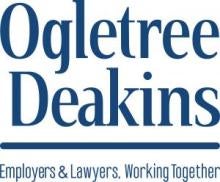On May 28, 2025, the Ontario government introduced Bill 30, titled the Working for Workers Seven Act, 2025, which builds on the six prior Working for Workers Acts. Bill 30 proposes amendments to some statutes, including the Employment Standards Act, 2000 (ESA), the Occupational Health and Safety Act (OHSA), and the Workplace Safety and Insurance Act, 1997 (WSIA).
Quick Hits
- On May 28, 2025, the Ontario government introduced Bill 30, titled the Working for Workers Seven Act, 2025, building on the six prior Working for Workers Acts.
- Bill 30 introduces a new unpaid leave for employees receiving group termination notices, would extend the maximum length of layoffs, and would require job posting platforms to implement systems to report fraudulent job postings.
- Proposed amendments under Bill 30 also include recognizing accredited health and safety management systems for regulatory compliance, introducing an administrative penalty system under the Occupational Health and Safety Act, and prohibiting employers from providing false information to the Workplace Safety and Insurance Board with penalties for noncompliance.
This article summarizes key amendments of importance to employers in Ontario.
The ESA
New Job-Seeking Leave
A new unpaid leave of up to three days would be introduced for employees who receive group notice of termination (i.e., when fifty or more employees are dismissed in the same four-week period), during the notice period, for job-seeking activities such as interviewing, job searching, and skill upgrading.
Employees would be required to provide employers with three days’ notice that they are taking this leave, where practically possible to give such notice.
Employees who receive termination pay instead of notice would be excluded from this entitlement (including employees who receive working notice for 25 percent or less of the required notice period).
Extended Layoff Provisions Amendment
Under the ESA, a layoff that lasts longer than what is allowed under the statutory definition of a “temporary layoff” is treated as a termination of employment.
The proposed amendments would permit extended layoffs of fifty-two weeks or more within a seventy-eight–week period, subject to certain criteria.
Bill 30 stipulates that an agreement between the employer and employee in writing would be required for layoffs surpassing thirty-five weeks in a fifty-two–week consecutive period.
Employers would be required to provide written agreements that outline the latest date the employer intends to recall the employee, which cannot be withdrawn once the agreement is made.
Employers would need approval from the director of employment standards for the extended layoff.
Job Posting Platform Guidelines
The bill defines “Job posting platforms” as online platforms that display public job postings. This definition excludes employers that only advertise positions for their own organization.
Operators of job posting platforms would be required to have mechanisms in place for users to report fraudulent job postings.
A written policy explaining how the operator intends to handle fraudulent publicly advertised job postings would be required.
The OHSA
Health and Safety Management Systems
Health and safety management systems that are accredited under the OHSA would be treated as equivalents for regulatory purposes.
Defibrillator Cost Reimbursement
The bill defines “Defibrillator” as an automated external medical heart monitor capable of detecting abnormal heart rhythms, assessing whether defibrillation is required and providing electrical impulses as medically required.
The Workplace Safety and Insurance Board (WSIB) would be required to reimburse eligible employers for the cost of a defibrillator when a workplace is required to have one under the OHSA.
Administrative Penalties
Bill 30 introduces a new administrative penalty system aimed at encouraging compliance with the requirements of the OHSA.
This system would allow inspectors to issue monetary penalties for OHSA violations.
Individuals who are issued a notice of administrative penalty would be able to request a review of the notice.
The administrative penalty amounts and ranges would be prescribed by future regulations.
The WSIA
Prohibited False/Misleading Representations
Employers would be prohibited from providing false or misleading statements or representations to the WSIB in relation to an individual’s benefits claim.
Employers that engage in this type of conduct would be subject to administrative penalties.
Penalties
Bill 30 introduces a new maximum fine of $750,000 per conviction for individuals found guilty of two or more counts of the same offence within a single legal proceeding. Additionally, failure to pay premiums under the WSIA would be classified as an offence and may result in administrative penalties.
The bill introduces new aggravating factors to determine a penalty under the WSIA, including and taking into account:
- Previous record of convictions
- History of noncompliance
- Multiple convictions in the same proceeding
Offence
An employer that fails to pay the premiums required under section 88 of the WSIA would be guilty of an offence under the WSIA, and the act would empower courts to order restitution as a remedy.





 />i
/>i
